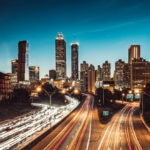Cities from an antidisciplinary perspective
For decades now, the conceptual terminology of urban planning has been striking. There are smart cities, urbaneering, digital cities, information cities and interconnected cities. These new terms, together with new tools like the internet of things and big data are transforming a debate that began several thousands of years ago in ancient China and the valleys of Mesopotamia. The discussion of the future of cities is far from new, as it entails some of humanity’s oldest concerns. What is unique today – as we’ll see – is not the novelty of the concepts but their potential.

Technological advances allow us to become interconnected, access valuable information, generate ideas together and process data at staggering speeds. But this energy needs to have a common goal. Many urbanists feel that there are certain elements missing from this transformative power. And traditional methods may not be enough to take advantage of them.
One of the fathers of urban planning connected several seemingly unrelated issues. Hippodamus of Miletus — a Greek architect who lived in the 5th Century BC – came up with the idea for the port of Athens and then gave his name to the rectangular grids used in many cities due to a pre-Socratic reverence for balance (the”Hippodamus Plan”). That’s why, apart from the practical aspects, Hippodamus felt that cities also had to include harmony, with mathematics extending a hand to aesthetics.
But in mid-2016, Joichi Ito of MIT’s Media Lab in the Journal of Design and Science, writing in the Journal of Design and Science, pointed to a new paradigm. Ito maintains that antidisciplinary work surpasses interdisciplinary work. In a culture of accelerated transformation, they are new sciences that need to be enhanced and others that deserve to be discovered. They are new subject matters whose analysis methods must be developed because once in a while we come across “non-elephants,” as Stanislaw Ulam said. Many of these antidisciplinary explorations entail risks that pose a challenge for institutions and governments.
The Urban Discovery project, for example, is a tool that combines data exploration in cities with data from residents’ activities. A fresh look at a type of mapping that was unknown until now and that would be impossible without the help of big data or a collaborative mentality. This antidisciplinary project has another benefit: its results are open to the public - anyone can access and enrich them with comments.

The discussion of the future of cities is far from new, as it entails some of humanity’s oldest concerns.
Ito’s idea about the connection between technology and design is an intriguing one that is echoed in projects all over the world. The boundaries among intellectual disciplines can be artificial or apparent. For example, Ito criticizes peer review, which generates greater knowledge about restricted areas. This hyper-specialization makes it incredibly hard for researchers to communicate with each other. Perhaps this is why some universities are attempting to propose alternative academic publications, as Elizabeth Stinson said in Wired. Some time ago we held a seminar to explore how travel literature could contribute to the design of future cities. Architects, philologists and engineers attended. We came up with suggestions for the tourists of the future and recalled episodes from the past that allow us to avoid making the same mistakes and understand that cities can be seen through the lens of a new literary genre.
MIT’s latest City Science Summit in Andorra was another example of this antidisciplinary spirit. Intriguing research was shared in a flexible and communicative atmosphere and the liveliness of Pecha Kucha’s presentations. Topics such as robotic kinesics, the use of digital technology to facilitate the integration of refugees, dynamic urban planning, the digital sensorialization of schools and persuasive autonomous vehicles. It represents another attempt to change the way we think about cities.
We are paying for the lack of foresight about the impacts of the prevalence of the combustion engine, but thanks to other data, we know that we can better anticipate the repercussions that new inventions will have on the environment and urban structures. But responsible planning is only possible with antidisciplinary knowledge. In addition to awareness of global warming, we also need to know how to live more efficiently. And for that we need bio-psychology. The concept of ethical responsibility is expanding thanks to scientific data from recent years.
Overlooking culture is a risk if our capacity to prevent and manage is so powerful. When we talk about art in the broad sense of the word, we are not just referring to the aesthetic pieces human beings create. When the first philosophers started to raise questions about the world, they found that the concept of respectful coexistence, governed by rights and laws is a cultural dimension. We can’t forget that taking care of the weak, for example, is a concept that is inherent to most traffic rules and a lot of classical literature. Among other things, culture allows us to see what cities were like in the past. Even a past when winters and summers were different.
Visiting exhibitions like Italo Calvino’s Invisible Cities at the Thyssen-Bornemisza Museum can help to change how we think. Among other works of art, visitors can see Camille Pisarro’s Rue Saint-Honoré in the Afternoon. Effect of Rain.